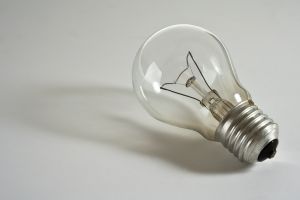 Patenting an idea is not necessary as straightforward as it seems, but it is also not overly complex. Inventors often talk about their great idea and how they have to get patent protection for it.
Patenting an idea is not necessary as straightforward as it seems, but it is also not overly complex. Inventors often talk about their great idea and how they have to get patent protection for it.
There is only one problem. It is not possible to simply go about patenting an idea!
Ideas are free and unprotectable in the US, unless you just keep the idea to yourself. Patent law protection applies to inventions or methods that are protected because they are applications of ideas. So, first you have to get to the point where you have something to patent.
Patenting an idea requires the inventor to have an invention, a method, a machine or an object you made that is concrete.
In addition, the invention has to be new, not obvious, and useful by government standards. If an invention meets these criteria, and a few others it can be protected by patent law.
First invent something with your great idea
Make something with your great idea if you really want to patent something. But you can’t patent everything. Actually, you can’t patent most things, and the vast majority of businesses rely on things that cannot be patented. Patenting requires two parts, novelty and lack of obviousness.
Novelty
Patenting an idea requires novelty. Nobody can have it already. It’s not just that no one can have patented it before, it actually has to be considered new. It cannot be in the literature and it cannot be sitting on someone’s desk in their pencil drawer unless it is you the inventor or one of the people who works with you.
Non-Obviousness
Even if it is novel, a little more is required. If it is something that people who know the industry would think, yeah, we should do that, it is so obvious, it still cannot be patented. So if you have seen red bottle tops but nobody made green ones, and everyone in the industry knows about the color green and paint and dye, most people would think the green is obvious. So there is no invention to protect with green bottle tops even if it is novel.
Patenting an Idea Types
If you want patent protection for your invention, it comes in three options:
Design Patent
Patenting an idea in the form of a design protects the appearance of an item. This can be the new bread basket that has a subtle sloping back that is ergonomic in your hand and made of regular wood. A lot of artistic design fits this arena.
Utility Patent
A utility protects the constructed item itself, including the mechanics or electronics. This could be the new chair with a completely different base than has ever been seen, balanced on a gyroscope of some kind that defies gravity. Other examples- computers, artificially constructed cells in biotechnology. There are four types of utility patents:
Machines
Mechanisms, mechanical, electrical or otherwise, that do things. Example, computers, but also simple example: pulleys.
Methods
ways of doing things, example: a way of dispensing a drug
Article of Manufacture
things you make out of known materials—like a hammer.
Composition of matter
Whenever you mix something together and get something new – that is composition of matter. It does not have to be stable or long lasting.
Plant Patents
While there is a special group of patents for people interested in plants, it is a much smaller group of people. So it gets a brief mention.
Generally, the patenting an idea process is more selective and specific than many inventors think. It is not for every great idea out there that gets turned into a great invention. If an invention meets the criteria, however, it can make your invention more valuable because of the exclusive rights the invention and anyone license or sell an invention to would have for twenty years after you patent your invention. So every inventor with a great invention should look into patent protection to determine if it will work for them.
Leave a Reply